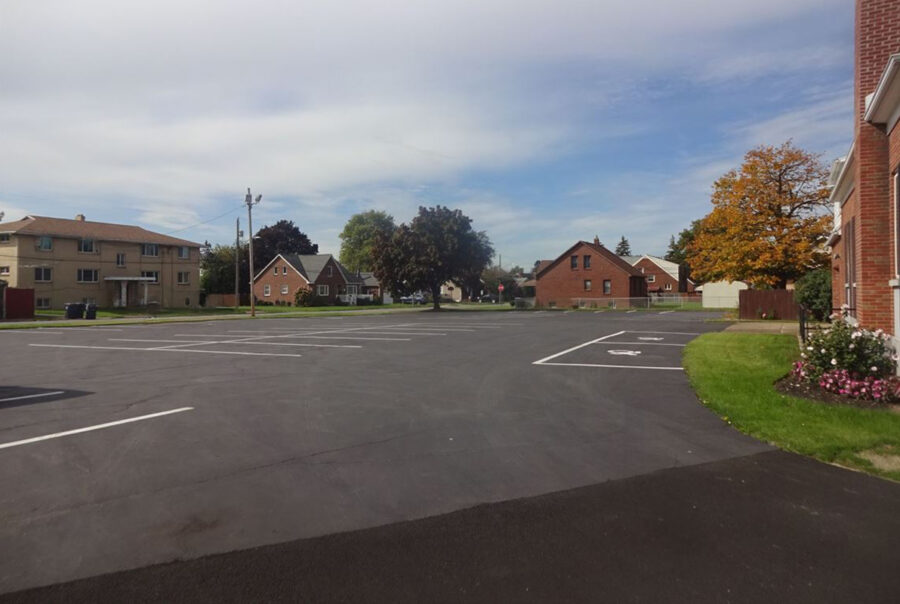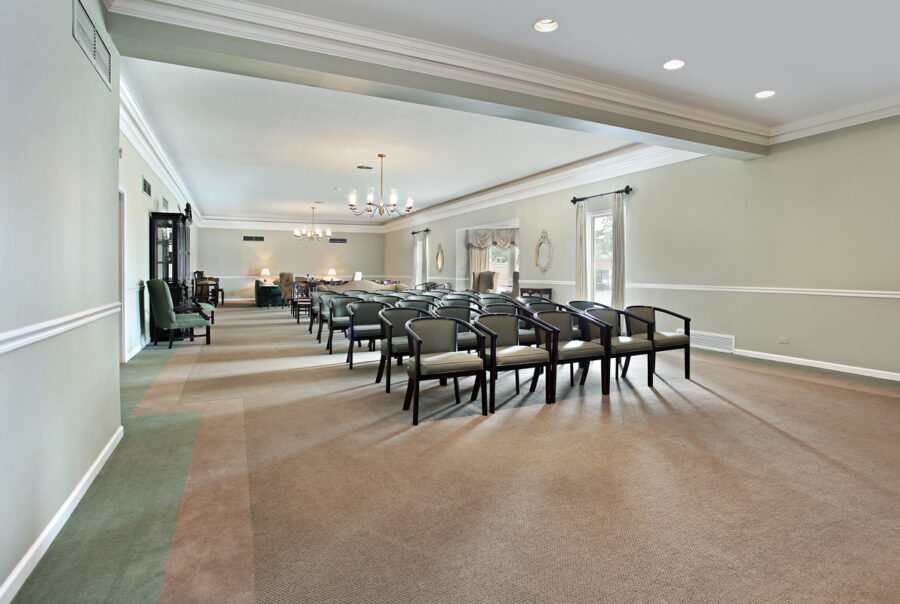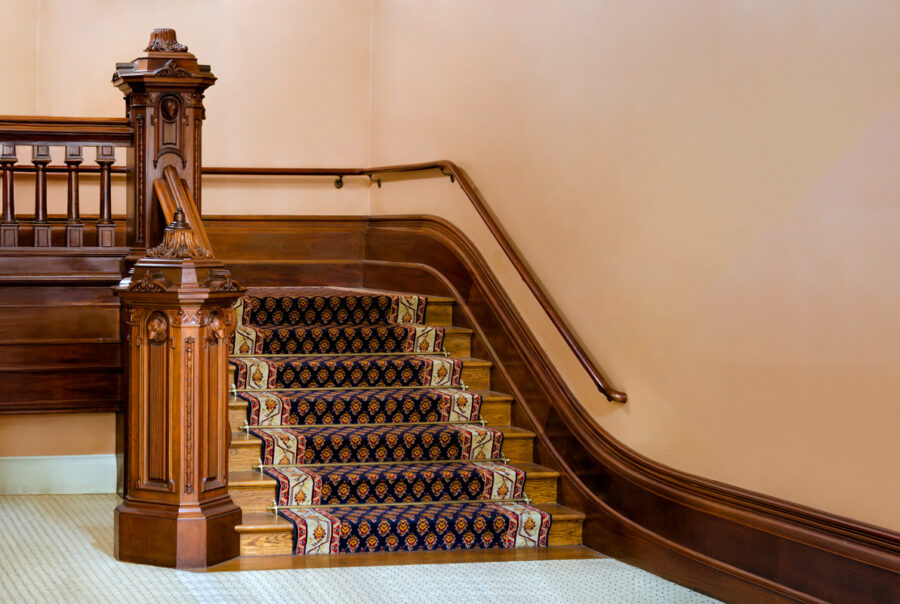Funeral Home
This playbook is your go-to resource for understanding the coverage needs of funeral service providers — from sensitive client interactions to protections for facilities, vehicles, and mortuary operations.
The following playbook is intended to provide guidance on Merchants’ appetite and most desired risk characteristics. Your Merchants team is available to speak about the entirety of a risk that may have characteristics not exactly fitting our desirability.
We also encourage you to refer to Merchants Appetite Guide under the Resources/Tools menu of the Commercial Gateway in Merchants agent portal website for class-specific eligibility.
Description of Operations
Funeral directors or morticians arrange for a variety of services to prepare deceased bodies for burial or cremation. These services include transport of the body, preparation and embalming, sale of caskets and urns, memorial services at any location chosen by the client and notification to the newspaper. Cremation also can be arranged through the funeral director. A pre-payment option may be offered, which places a long-term fiduciary responsibility on them.
Merchants Appetite
The following risk characteristics are intended to provide guidance on Merchants’ appetite. Your Merchants team is available to speak about the entirety of a risk that may have characteristics not exactly fitting our desirability. Refer to Merchants Appetite Guide under the Resources/Tools menu of the Commercial Gateway on merchantsgroup.com for class-specific eligibility.
Desirable Risks
- In business and under current ownership / management for 3 years or more
- Year-round operations
Ineligible
- Sales of directly imported goods
Exposures
Understand the key risks service providers face — and how each business type’s exposures can impact insurance coverage, potential claims, and safe daily operations.
Automobile Exposure
Automobile exposures include driving the hearse, flower car and other vehicles supplied to the family. All drivers must have the appropriate licenses for the function they are performing, and should be aware of any local ordinances regarding funeral processions. MVRs should be ordered on a regular basis. Side trips should not be permitted. Additional services such as long distance body transport or emergency body pickup may be offered and must be evaluated.
Crime Exposure
Crime exposure is from employee dishonesty. Hazards increase without proper background checks and monitoring procedures. There should be a regular auditing of books especially if prepaid policies have been sold.
Inland Marine Exposure
Inland marine exposures include accounts receivable, bailees customers, computers, special floater, and valuable papers and records. The bailees customers exposure is from taking custody of the body of the deceased and any personal items that accompany it. Family and friends often leave their personal items in the funeral director’s office or other designated area during visitations and the funeral. Equipment used off premises, such as at churches and other locations to conduct the funeral, should be insured with a special floater. Duplicates of all records should be made and kept off site.
Premises Liability Exposure
Premises liability exposure is high. People entering the location are often in a fragile emotional state and may be unaware of their surroundings. The rooms and halls must be free of obstructions, and floor coverings must be in good condition. There should be sufficient personnel to direct and assist and they must be able to handle emergency situations. Parking lots and sidewalks must be kept free of ice and snow and must be in good condition. Lighting should be sufficient for the situation. Visitors may bring food into a designated area, which needs to be kept clean. If there is a playroom for children, it must be supervised at all times. Additional security may be required for high-profile funerals.
Off-premises exposures include conducting services at houses of worship and gravesites. Equipment used can pose a tripping hazard.
Professional Liability Exposure
Professional liability exposure is high. While damage to a body is considered property damage, there is the emotional distress to the family that may occur from any improper handling. The funeral director should comply with FTC regulations regarding itemization of prices for any services rendered. There should be excellent documentation regarding identification and handling of the deceased and any personal effects. The family’s wishes concerning all aspects of the body handling must be documented, signed and strictly followed. There should be procedures on checking latches on the casket and on the hearse. Should cremation or other services be outsourced, the funeral director should be sure there is adequate liability coverage in place from the outsource vendor.
Property Exposure
Property exposure depends on the services performed. Furnishings are very susceptible to smoke, water and fire damage. Caskets are often wooden and lined with fabric that will help feed a fire. If embalming takes place on premises, the embalming fluid should be stored in small quantities and kept in a cabinet due to its corrosive and toxic nature. Security is important to prevent unauthorized entrance to the premises. Embalming fluid has become an attractive additive to marijuana so theft can be a problem. If the funeral home is located in a converted dwelling, all heating, cooling, and electrical wiring must meet current codes.
Garagekeepers Liability Exposure
Garagekeepers liability exposure arises if the funeral director offers valet parking or places visitors’ vehicles in line for funeral processions.
Workers Compensation Exposure
Workers compensation exposure can be high due to the handling of bodies. Embalming operations require employees to wear gloves and masks to prevent contamination from bodily fluids, particularly blood. In addition there is the exposure to cuts due to the equipment being used. All employees have exposures to lifting injuries as bodies can be heavy. Those transporting bodies to and from the funeral parlor are exposed to automobile-related injuries.
Risk-Smart Funeral Services
Click each photo to see what makes it best-in-class — and how these features help minimize risk and reduce exposures in service-based environments.
Red Flags in the Field
Click each photo to learn what’s not-so-great — and how these conditions can increase risk, raise exposures, or lead to costly claims in service businesses.
Automatic Coverages
These built-in coverages come standard with our retail and service business policies, offering added protection for income, equipment, property, and more — all at no additional cost.
Accounts Receivable
Coverage for accounts receivable is provided at a limit of $25,000 on premises and $10,000 off premises. The on premises limit may be increased. This coverage is subject to the property deductible in the policy. This coverage protects against loss resulting from an inability to collect accounts receivable due to loss, damage, or destruction of books or records of accounts. The on premises limit may be increased.
Additional Insured by Contract, Agreement or Permit
Provides coverage to any person or organization when the named insured has agreed in a contract or agreement to name that person or organization as an insured on their policy. Automatically included on a blanket basis. Various other optional additional insured endorsements are available on a scheduled or blanket basis.
Annual Aggregate Limit Per Location
This policy conditions amends the General Aggregate Limit to apply separately to each location owned by or rented to the insured.
Damage to Premises Rented to You (Fire Legal Liability)
Business Liability coverage for damage because of property damage to a premises while rented to the insured or temporarily occupied by the insured with permission of the owner is provided at a limit of $300,000 unless a higher limit of insurance is shown in the policy declarations.
Debris Removal
Coverage applies for expense to remove debris of covered property and other debris that is on the described premises, when such debris is caused by or results from a covered cause of loss that occurs during the policy period. The expenses are only paid if they are reported within 180 days of the loss or damage. The coverage limit is 25% of the direct physical loss plus $25,000.
Employee Dishonesty
Coverage is included for loss or damage to Business Personal Property and Money and Securities resulting from dishonest acts committed by any of the insured’s employee. Coverage limit is $25,000 subject to a $250 deductible. Higher limits may be purchased.
Forgery or Alteration
$10,000 Provides coverage when someone other than the employee or owner forges a signature on a check or other monetary instrument in order to obtain money that belongs to the insured. Forgery by an employee is covered in the Employee Dishonesty coverage. Higher limits are available.
Identity Recovery
In the event of a covered identify theft, coverage for case management service and expense reimbursement up to an annual aggregate limit of $15,000 is provided. The identity theft must involve a insured under the policy, must be first discovered during the policy period and must be reported within 60 days after it is first discovered.
Lock & Key Replacement
Coverage applies for the cost to repair or replace locks or keys at the described premises due to theft of keys from your premises. The limit for this coverage is $500 subject to a per occurrence deductible of $50.A limit of $500 applies to customers keys.
Money & Securities
Coverage for money, securities and credit card slips is included at a limit of $25,000 inside the premises and $5,000 outside the premises subject to a $250 deductible. Higher limits may be purchased. The loss of money and securities must result directly from theft, disappearance or destruction. Additional limits for inside the premises coverage are available.
Newly Acquired or Constructed Property
If the policy covers a building, that coverage can be extended to apply to new buildings while being built on the described premises and buildings the insured acquires at a premises other than the described premises that are intended for a similar use as the building described in the policy or to be used as a warehouse. If the policy covers business personal property that coverage may be extended to such property the insured acquires at any location acquired or at a newly constructed building. This extension does not apply to personal property temporarily acquired in the course of installing or performing work on such property. Limit provided is $500,000 for building and $250,000 for business personal property.
Pollutant Clean Up and Removal
Coverage is provided to pay the insured’s expense to extract pollutants from land or water at the described premises if the discharge, dispersal, seepage, migration, release or escape of the pollutants is caused by or results from a Covered Cause of Loss that occurs during the policy period. The expenses will only be paid if they are reported in writing within 180 days from the date on which the loss occurs. The most that will be paid is $25,000 for all expenses arising out of a loss occurring during each separate 12 month period of the policy.
Utility Service - Direct Damage & Time Element
Coverage is provided for loss or damage to covered property caused by the interruption of service to the described premises. The interruption of utility services must result from direct physical loss or damage by a covered cause of loss to the insured property. Utility services include water supply, communication supply and power supply. The limit for direct damage is $25,000 and $25,000 for loss of business income or extra expense. Higher limits are available.
Valuable Papers
Coverage applies to direct physical loss o damage to valuable papers and records owned by the insured or that are in the insured’s care, custody or control caused by or resulting from a covered cause of loss. This coverage includes the cost to research, replace or restore the lost information on valuable papers and records for which duplicates do not exist. The limit for this coverage is $25,000 on premises and $10,000 off premises. The on premises limit may be increased.
Voluntary Property Damage
Voluntary Property Damage coverage is provided for unintentional property damage to the property of others caused by the insured or while the property is in the insured’s possession and the damage is arising out of the operations described in the policy. The coverage limit is $5,000 per occurrence/$25,000 aggregate with a $500 per claim deductible.
Water Back-Up and Sump Overflow
Coverage is provided for direct damage or loss to covered property caused by or resulting from water which backs up through or overflows from a sump, sump pump or related equipment. The cost of repairing or replacing the sump pump or its related equipment is not covered if the loss is caused by a mechanical breakdown. Coverage does not apply if the insured fails to keep a sump pump in proper working condition or fails to perform routine maintenance or repair necessary to keep a sewer or drain free of obstructions or the sump pump failure is caused by or results from failure of power unless the policy is amended to cover power failure. A limit of $25,000 applies.
Helpful Resources
Navigate to “Merchants On-Demand” from the homepage of your Merchants agent portal website to access flyers for your reference, as well as flyers you can distribute to clients.








